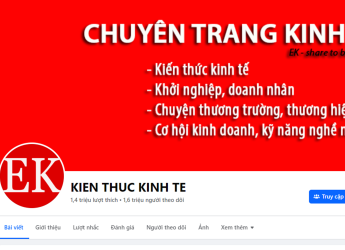Optimizing content for search: A 4-step guide
SEO and content are both powerful on their own.
But it’s the combination of the two where you see the best results.
It isn’t just optimizing your content for search but instead, taking a different approach and creating a single SEO content strategy.
When we talk about optimizing content for search, we often highlight what you’d expect.
- Choose a keyword.
- Use that keyword in your
- Title tag.
- Meta description.
- Header tags.
- Copy.
- Image file name.
That will get you some results. And a few years ago, that was truly all you needed to do.
But today, you need to do way more to get better results.
You need to intertwine SEO and content so they’re one in your strategy.
How to get better results from your content
Start by thinking about your audience.
- Who are you writing for?
- What are they interested in?
- What questions do they have that you can answer?
- What terms do they use for the topics that you write about?
- Are they the same words you use, or are they different terms?
If they’re different, you need to take note of that and speak to them in their language by using the words they use, even if they’re not your brand terms.
Everything you create should be designed to help your audience. If you’re not providing valuable content, they will not come back again and read more.
Your goal with all content development is to become a trusted resource for your audience. When users know they can get the answers they need from you, they’re more likely to return and share your content with someone else, which helps your business grow.
How to use SEO and content together
Once you’ve clarified who you’re creating this content piece for, it’s time to start brainstorming.
You can:
- Brainstorm ideas.
- Check the SERPs for terms that might interest your audience and ensure your content aligns with the search intent.
- Use your favorite SEO keyword research tool for idea generation.
Search for keywords that are related to your core products or services. Search for questions your ideal customers ask regularly. Often, questions are a fantastic starting point for content development.
Step 1: Research topic
To do your research, you can use search features and tools such as:
- Google:
- Autocomplete
- Related searches
- People also ask
- AnswerThePublic
- Quora
- Social media
- Hashtags
- Searches
- Groups
You want to look and see what people are asking about the topics most closely aligned with your business.
What questions do they have? What information do they need to have before making a decision?
Step 2: Research keywords
Once you have a topic idea based on research, you know people are interested because they’re searching for information online.
Now it’s time to go back to the keyword research tool and see what keyword you want to target in your content piece.
Choose the keyword option that provides you with a realistic chance of ranking. It should also tie the closest to your desired topic and products or services.
Step 3: Write
Now, you’re ready to start writing. You have a topic you know people are interested in and searching for. You have a keyword you’ve researched, and you know your website has a good chance of ranking at the top of Google.
It’s time to create a great piece of content that provides value for your ideal customer. You want to focus on them, their needs and their questions.
Don’t get fixated on a specific number of words or paragraphs. Instead, focus on providing value, answering questions, and helping them.
You should have a good idea of your customer’s questions about this topic.
Writing tips
- No one wants to read big blocks of text. You’ll lose your readers if that’s what you publish. Make sure you’re improving the readability for your audience, adding:
- Headers (H2s/H3s)
- Ordered/unordered lists.
- Images/videos.
- White space.
- Don’t write to a specific word count. Write to tell the reader what they need. Help them understand the topic. Anticipate the questions they’re going to have and answer them.
- Avoid unnecessary fluff. Don’t set out to use your keyword a specific number of times. When you write to a word count or keyword insertion count, you can end up with content that feels unnatural and will not drive the results you want.
- Make sure your content is of high quality and follows grammatical rules. Edit it to ensure it’s easy to read and understand. Reading your copy aloud can help you identify keyword stuffing, grammatical errors, and more. It’s an easy way to ensure your copy sounds natural when your audience reads it.
- Make sure your content is helpful, valuable, thorough (have you answered all of your audience’s questions on this topic?), and ultimately better than the competition’s content if you want to outrank them.
In short, tell the story, provide value, let the piece develop naturally, and you’ll have better content.
Step 4: Optimize
Now it’s time to optimize your content.
You’ve chosen your keyword, and you want to use that in the following SEO elements.
- Title tag
- Meta description
- Copy
- Header tags
- Image file name (format with a hyphen in between words)
- URL
Be sure to follow SEO best practices when optimizing your content.
You should start to see results as long as you’ve chosen a topic that you know people are interested in, a keyword your website can rank for, written for your customer, and provided value – not fluff.
Optimization tips
- Link to other relevant content on your website. Providing additional resources for your audience can help them better understand the topic.
- Refresh your optimization periodically. Optimization is not a one-and-done task; it’s ongoing. You can refresh on a schedule or when you see the opportunity to improve keyword rankings for a piece of content. Sometimes an update and refresh can help an older piece move up in the rankings.
The best content is SEO content
Simply churning out content is not enough to win at SEO today. You need to create helpful content for your audiences.
Think of it as one unified strategy and use your SEO tools from the beginning, and you’ll get better visibility in the SERPs. Craft a strategy focusing on your audience and their questions first and foremost.
Your content strategy should include topics that tie together, are of interest to your audience and are helpful to your audience.
Link from one piece to another, providing additional resources and information your audience may want to dig deeper into, and you’ll help your overall SEO content efforts.
10/09/2022




